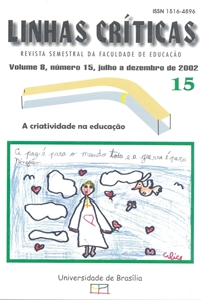A criatividade na escola: três direções de trabalho
DOI:
https://doi.org/10.26512/lc.v8i15.3057Keywords:
Criatividade, Escola, Aluno criativo, Formação de professores, SubjetividadeAbstract
O objetivo do artigo, que integra idéias básicas das nossas pesquisas no campo da criatividade a partir da perspectiva histórico-cultural, é apresentar as principais formas nas quais a criatividade se expressa no contexto escolar e mostrar a necessidade de trabalhar em relação a cada uma delas, tendo em conta suas inter-relações e interdependências. A utilização intencional do espaço escolar para contribuir no incremento da criatividade supõe trabalhar em três direções: o desenvolvimento da criatividade do aluno, o desenvolvimento da criatividade dos educadores e o desenvolvimento da criatividade da escola como organização. Para cada uma das direções de trabalho apresentadas, descreve-se como se expressa a criatividade e fundamentam-se as estratégias e ações que podem ser desenhadas para estimulá-la.
Downloads
Downloads
Published
How to Cite
Issue
Section
License
Copyright (c) 2016 Linhas Críticas

This work is licensed under a Creative Commons Attribution 4.0 International License.
Authors who publish in this journal agree to the following terms:
-Authors maintains the copyright and grants the journal the right of first publication, the work being simultaneously licensed under the Creative Commons Attribution License which allows the sharing of the work with recognition of the authorship of the work and initial publication in this journal.
- Authors are authorized to enter into additional contracts separately, for non-exclusive distribution of the version of the work published in this journal (eg publish in institutional repository or as a book chapter), with acknowledgment of authorship and initial publication in this journal.
-Authorers are allowed and encouraged to publish and distribute their work online (eg in institutional repositories or on their personal page) at any point before or during the editorial process, as this can generate productive changes as well as increase the impact and the citation of published work (See The Effect of Free Access).



